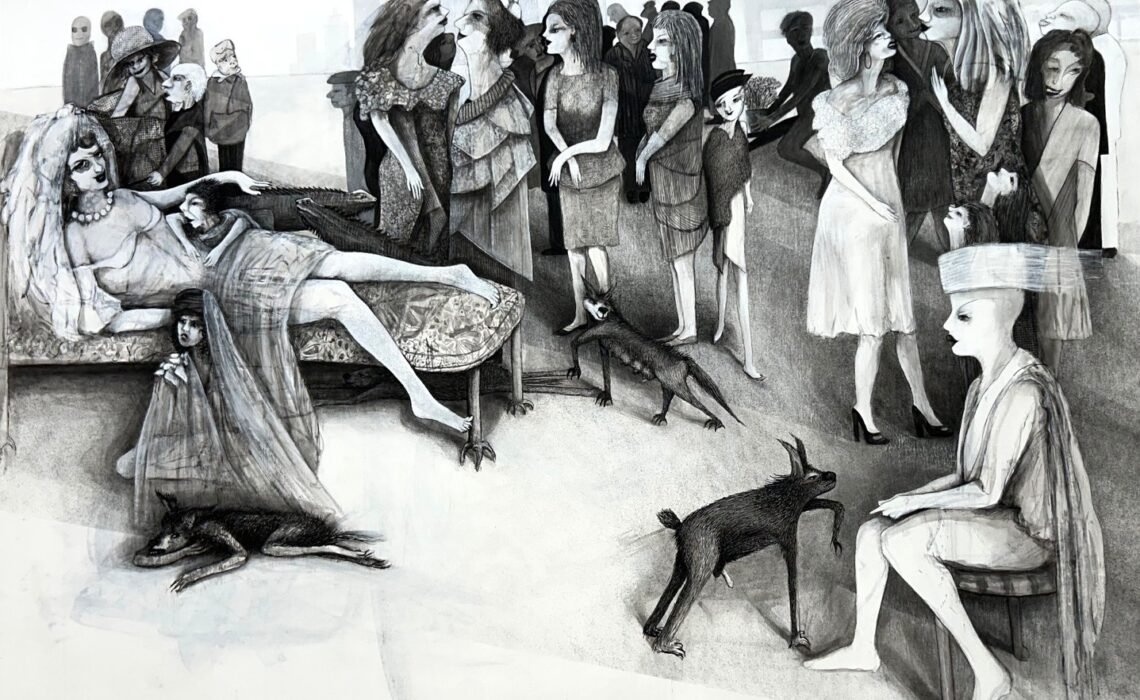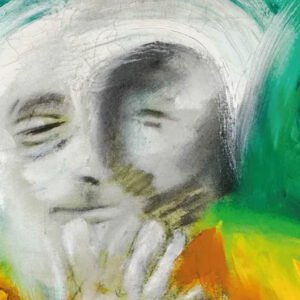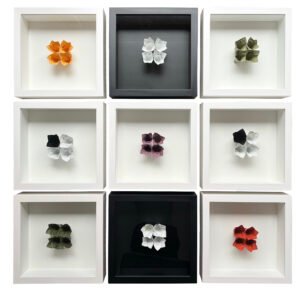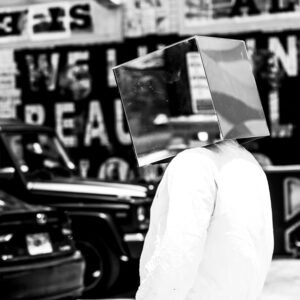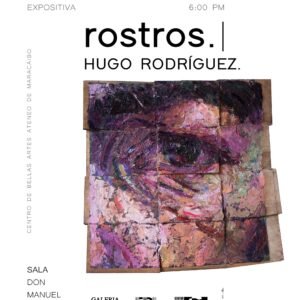Alicia Viteri y la línea invisible del ser
Entre la sátira y la contemplación, la obra de Alicia Viteri traza una línea que une el pasado y el presente, el individuo y la multitud, la sombra y la luz. Su exposición La línea invisible revela, con la serenidad de quien ha mirado largo tiempo, que el arte es también una forma de persistir en la mirada.
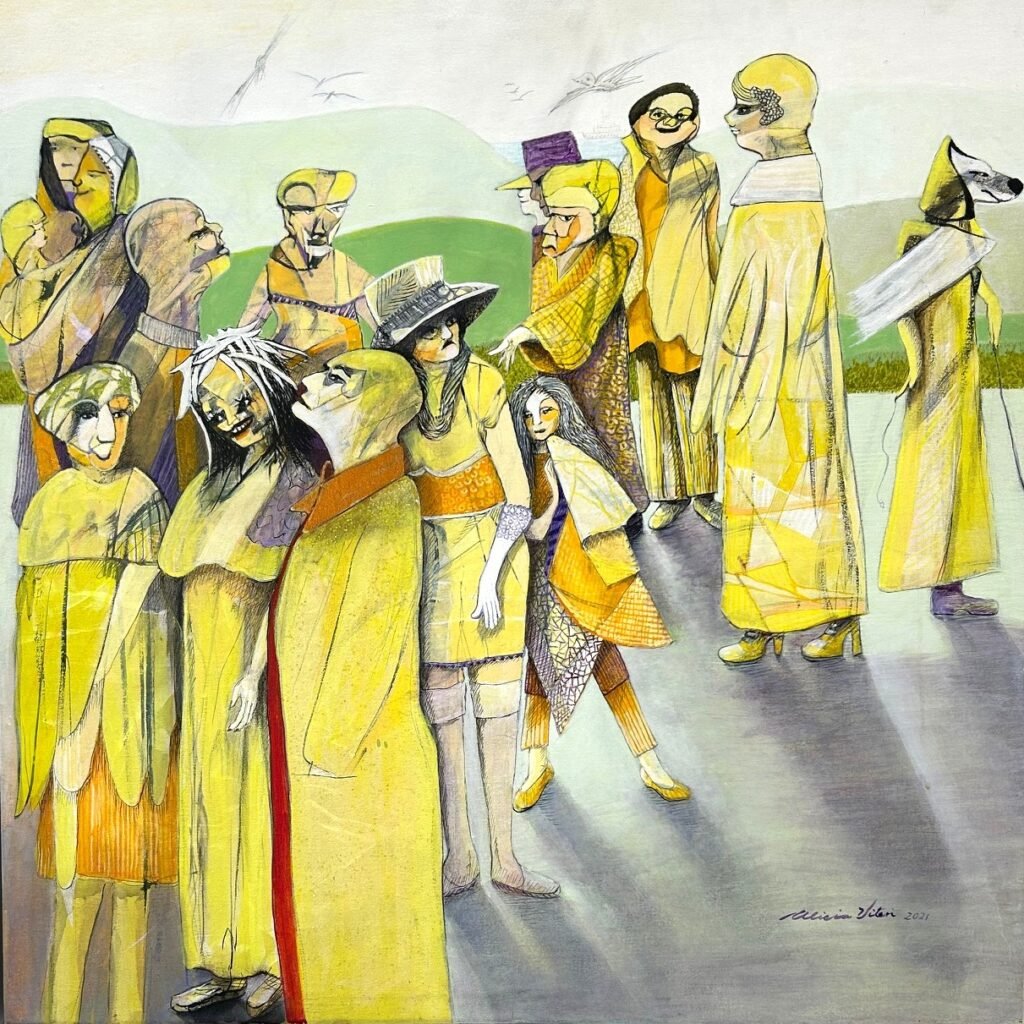
En el panorama del arte panameño contemporáneo, la trayectoria de Alicia Viteri destaca por su consistencia, su profundidad y su incesante capacidad de transformación. Su reciente exposición en los espacios del Banco Nacional de Panamá permite recorrer más de cinco décadas de trabajo en las que el ser humano —con sus gestos, sus máscaras y sus fragilidades— se erige como el centro de un universo plástico en continua mutación. Desde los primeros grabados de los años setenta hasta las obras digitales y participativas de hoy, Viteri ha sabido conjugar rigor técnico y visión poética para construir una de las narrativas más coherentes y singulares del arte centroamericano.
La exposición reúne grabados, collages, pinturas, dibujos y obras digitales que permiten seguir los distintos momentos de su evolución. En conjunto, conforman un paisaje coherente y vibrante, donde cada técnica se convierte en una forma de pensamiento visual. Las piezas dialogan entre sí, abriendo un hilo continuo que conecta lo artesanal con lo tecnológico, lo íntimo con lo colectivo, lo figurativo con lo abstracto.
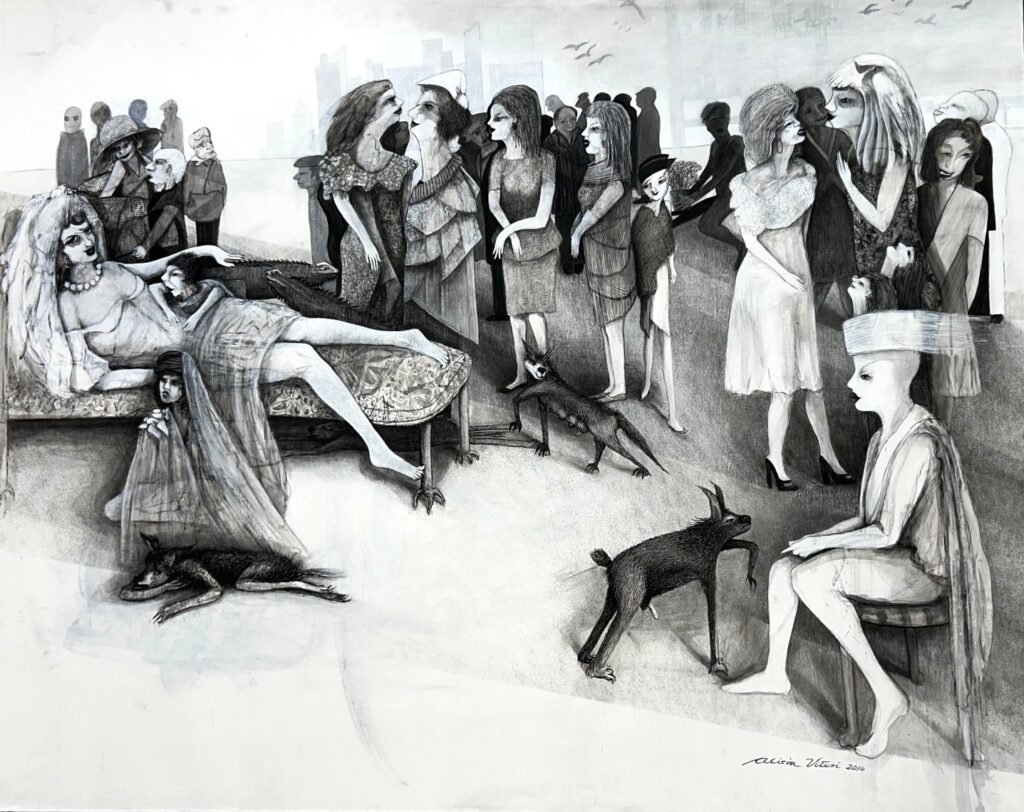
Dentro de ese extenso recorrido, la serie Memoria Digital (2000–2009) marca un punto de inflexión. En ella, Viteri incorpora medios tecnológicos, experimenta con la fotografía y la impresión, y convierte la imagen digital en un territorio poético. Lo humano persiste, pero transfigurado; aquí los retratos se vuelven resplandecientes, casi espectrales, como si la memoria —al digitalizarse— adquiriera una nueva vida. En lugar de temer a la tecnología, la artista la utiliza para explorar las capas del tiempo, los afectos y la identidad. Su obra demuestra que la modernidad no borra la emoción, sino que la reformula.
El recorrido culmina con Migrantes (2020–2025), una instalación que resume muchas de las obsesiones que han acompañado a Viteri a lo largo de su carrera: el cuerpo, el tránsito, la huella, la comunidad. Frente a una gran pintura donde siluetas humanas parecen avanzar hacia un horizonte luminoso, un lienzo extendido en el piso invita al público a descalzarse, caminar, dibujar, dejar su marca. Es una obra que trasciende la contemplación para convertirse en experiencia compartida. Cada huella, cada trazo, alude a los pasos de quienes cruzan fronteras en busca de una vida posible: el paso del Darién, dolorosamente cercano, pero también el de tantos otros desplazamientos humanos que siguen marcando nuestro tiempo.
Sin dramatismo ni consigna, Migrantes une dos gestos: el de quien camina y el de quien observa. En esa intersección, Alicia Viteri transforma la tragedia en comunión, la pérdida en presencia. Su obra, que comenzó indagando en la sombra, se abre ahora a la luz. No es solo una evolución formal, sino una forma de sabiduría: la certeza de que, después de todo, seguimos dejando huellas —a veces inciertas, pero profundamente humanas— sobre la superficie del mundo.
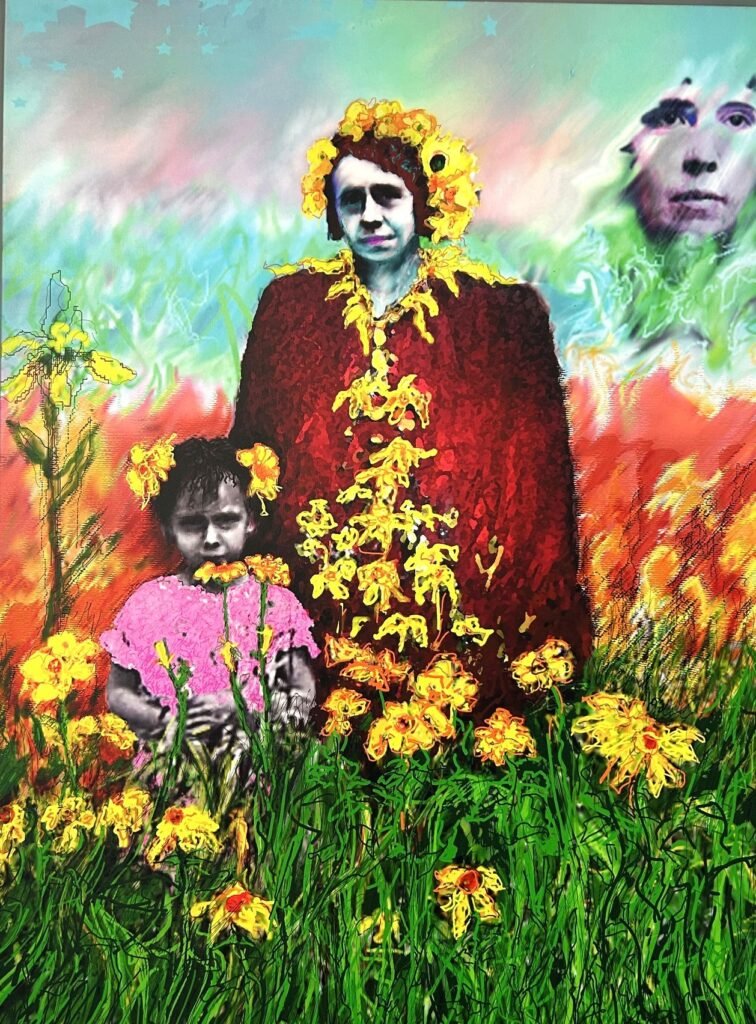
DE LA SERIE MEMORIA DIGITAL
Alicia Viteri and the Invisible Line of Being
Between satire and contemplation, Alicia Viteri’s work traces a line that unites past and present, the individual and the multitude, shadow and light. Her exhibition The Invisible Line reveals, with the serenity of one who has observed for a long time, that art is also a way of persisting through the gaze.
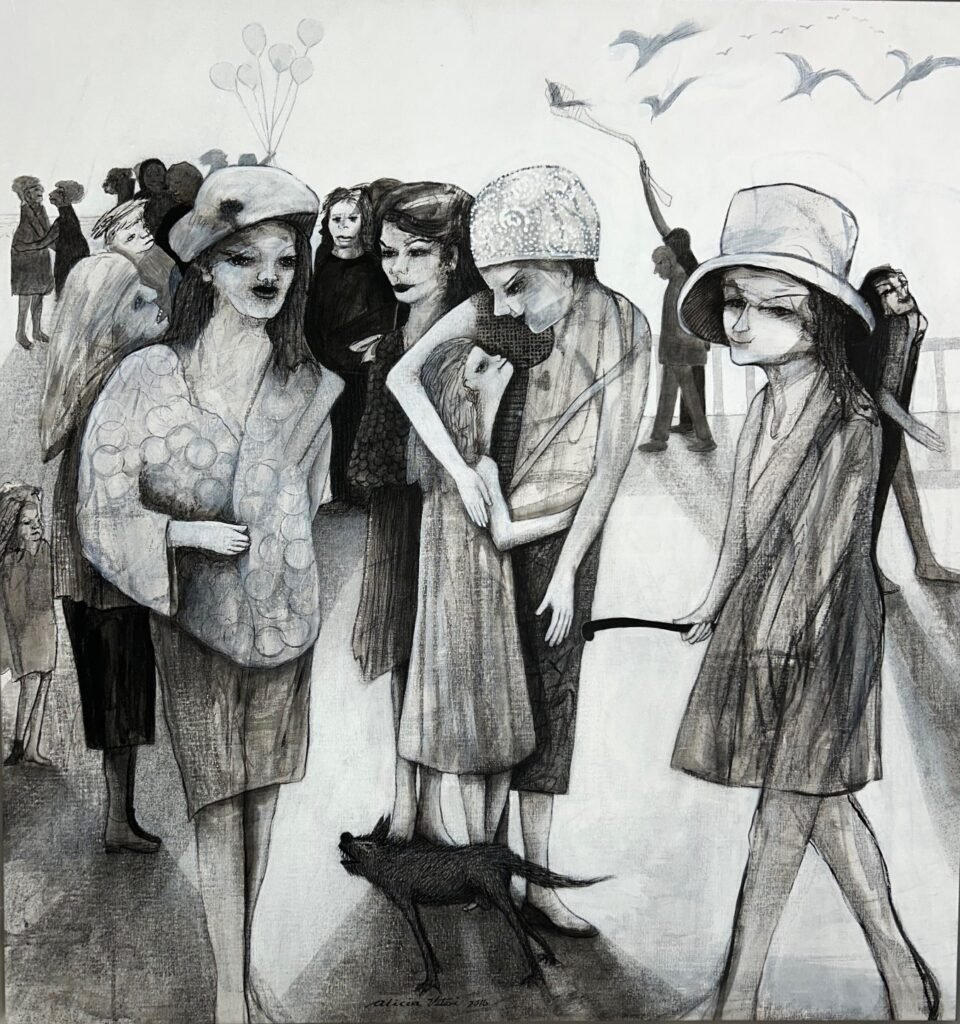
Within the panorama of contemporary Panamanian art, Alicia Viteri’s career stands out for its consistency, depth, and unceasing capacity for transformation. Her recent exhibition at the Banco Nacional de Panamá spans more than five decades of work in which the human being—with all its gestures, masks, and fragilities—emerges as the center of a visual universe in constant mutation. From her early prints of the 1970s to today’s digital and participatory works, Viteri has skillfully combined technical rigor and poetic vision to build one of the most coherent and distinctive narratives in Central American art.
The exhibition brings together prints, collages, paintings, drawings, and digital works, allowing viewers to follow the different moments of her evolution. Together, they form a coherent and vibrant landscape in which each medium becomes a form of visual thought. The pieces converse among themselves, weaving a continuous thread that connects the artisanal with the technological, the intimate with the collective, the figurative with the abstract.
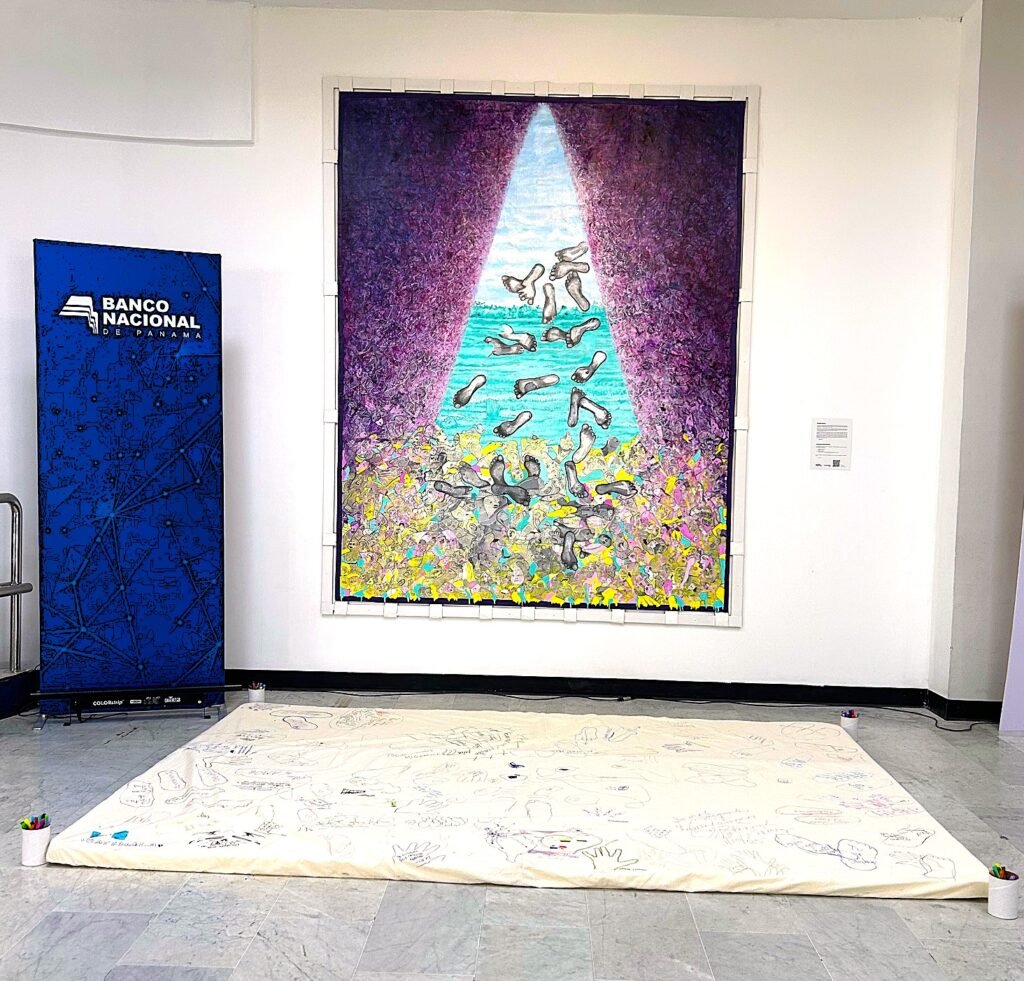
MIGRANTES – INSTALACION
Within this broad trajectory, the series Digital Memory (2000–2009) marks a turning point. In it, Viteri embraces technological media, experimenting with photography and printmaking, and turns the digital image into a poetic terrain. The human element persists, but transfigured; here, the portraits become radiant, almost spectral, as if memory—once digitized—had acquired a new life. Rather than fearing technology, the artist uses it to explore layers of time, emotion, and identity. Her work shows that modernity does not erase feeling—it reshapes it.
The journey culminates with Migrants (2020–2025), an installation that gathers many of the obsessions that have accompanied Viteri throughout her career: the body, movement, trace, and community. Facing a large painting where human silhouettes seem to advance toward a luminous horizon, a canvas stretched across the floor invites viewers to remove their shoes, walk, draw, and leave their mark. It is a work that transcends contemplation to become a shared experience. Each footprint, each gesture, evokes the steps of those who cross borders in search of a possible life: the crossing of the Darién—painfully near—but also the many other human displacements that continue to shape our time.
Without dramatism or slogan, Migrants unites two gestures: that of the one who walks and that of the one who observes. In that intersection, Alicia Viteri transforms tragedy into communion, loss into presence. Her work, which once probed the shadow, now opens itself to light. It is not only a formal evolution but a form of wisdom: the understanding that, after all, we keep leaving traces—sometimes uncertain, yet profoundly human—upon the surface of the world.
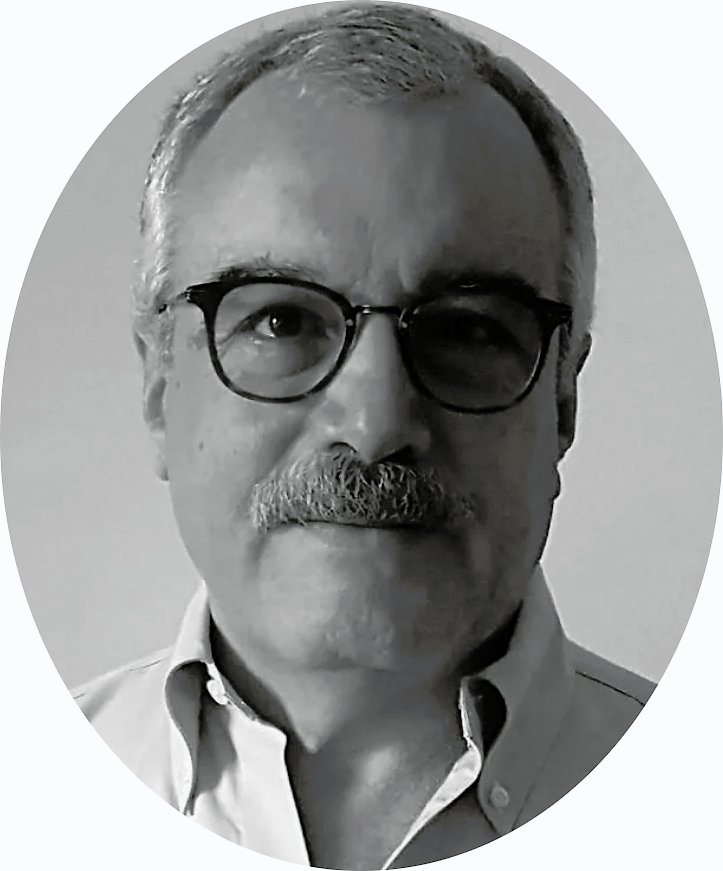
Cesar Sasson
Magíster en Curaduría de Arte
coleccionsasson@gmail.com
@coleccionsasson
Ciudad de Panamá – Panamá
Octubre, 2025





